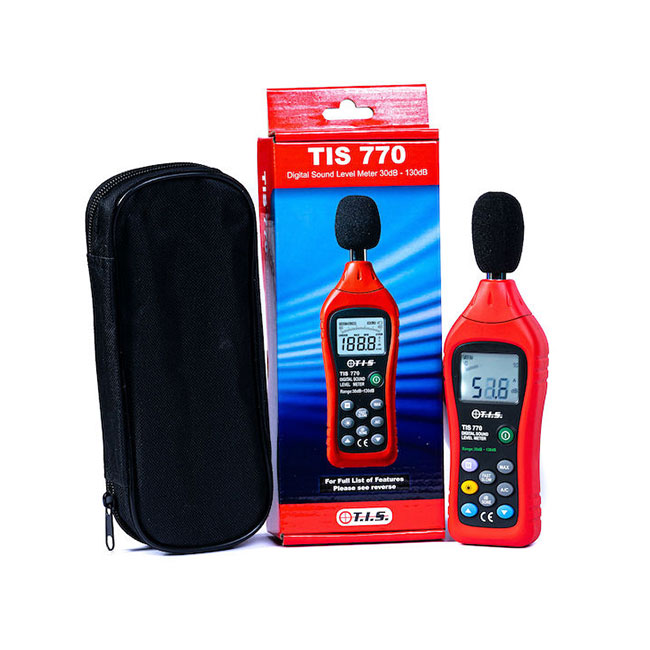Acoustic sound is sound that travels through the air, rather than audio sound which travels through a cable. A digital sound level meter, therefore, is a device which measures acoustic sound levels, and is designed to respond to sound produced in the same way that the human ear does. This allows us to take measurements of sound and make objective judgements on environmental sound levels for a variety of purposes.
What is a digital sound level meter used for?
Exposure to loud noise for a very short period of time is not generally harmful, but prolonged exposure to loud noise can be very harmful to the human ear. So sound level meters are typically used for measuring sound levels in a variety of settings, and to be compared against recognised safe standards. These settings are usually ongoing situations where sound is being produced and where the levels need to be monitored to protect employees or members of the public, such as open-plan offices, industrial settings where machines or tools are operating, measuring road, rail or air traffic, construction sites or in various urban situations where large events such as concerts may cause a local disturbance.
Sound level meters are also used to measure building acoustics and can be used in various engineering situations to measure the impact and influence of noise. Some sound level meters, such as the TIS 770 supplied by Test Instrument Solutions, can also be used to test fire alarm sounder levels. This could be in a place of work, or in settings such as hospitals, schools or nursing homes, and is crucial in ensuring that the sounder levels are sufficient that they can be heard by all occupants at all times, ie. when an alarm is activated.
How does a digital sound level meter work?
A digital sound level meter usually consists of four separate components; a microphone, a preamplifier, a signal processing unit and a digital display screen. The microphone measures changes in air pressure produced by a sound source and converts this sound signal into an equivalent electrical signal, and because this electrical signal is at a very low level, it requires the preamplifier to make it stronger so it can be processed by the main processor. This then enables the processor to give an accurate sound level reading.
Most meters will include a time-weighting factor, which is how the meter reacts to changes in sound pressure. The time-weighting factor produces an exponential average reading from the fluctuating signals and usually provides an A-weighting and a C-weighting. A is based on a 40 decibel (dB) loudness curve and C is based on a 100 dB loudness curve.
Understanding decibels
The digital display shows sound levels in decibels and the reading will also display the selected combinations of time and weighting-frequency. As a unit of measure, decibels is provided as a single value, which is known as the broadband value. This uses all the values across the audio frequency band (20HZ to 20 kHZ) to calculate the level. But it is important to understand that decibels are a logarithmic unit, not a linear unit like on a ruler. This means that if you doubled the sound level this would correspond to a 10dB higher measurement value. Or, every increase of 10dB on a scale is equivalent to doubling the sound levels.
What does a digital sound level meter look like?
We have talked about the four separate components of the digital sound level meter, and these are the prominent features. The microphone is typically attached to the top of a long stick which protrudes from the top of the main unit. This distance is important, so that the microphone doesn’t pick up reflections from the unit, which can affect the accuracy of your readings. So the microphone picks up and measures the sound levels, and it is attached to the main body of the unit, which comprises of the digital display and button controls and which also contains the preamplifier and the signal processing unit.
A digital sound level meter is a handheld unit, and is lightweight and easy-to-use and transport between different environments. Different units will have different quality of microphones, in order to provide more accurate measurements. The TIS 770 supplied by Test Instrument Solutions is a typical instrument in that it provides a sound pressure accuracy tolerance and sound pressure frequency weighting characteristics.
In order to maintain the accuracy of your unit, it is recommended to routinely calibrate a digital sound level meter as the sensitivity can start to vary. Depending on the standards and regulations your type of usage is governed by, this can be internal calibration, or may have to be external.
Please note that this section is for information purposes only. Anyone using equipment referred to in this section must be suitably qualified and/or experienced within the respective field. If in doubt before use, please consult a qualified electrician or engineer & thoroughly read all instruction booklets.